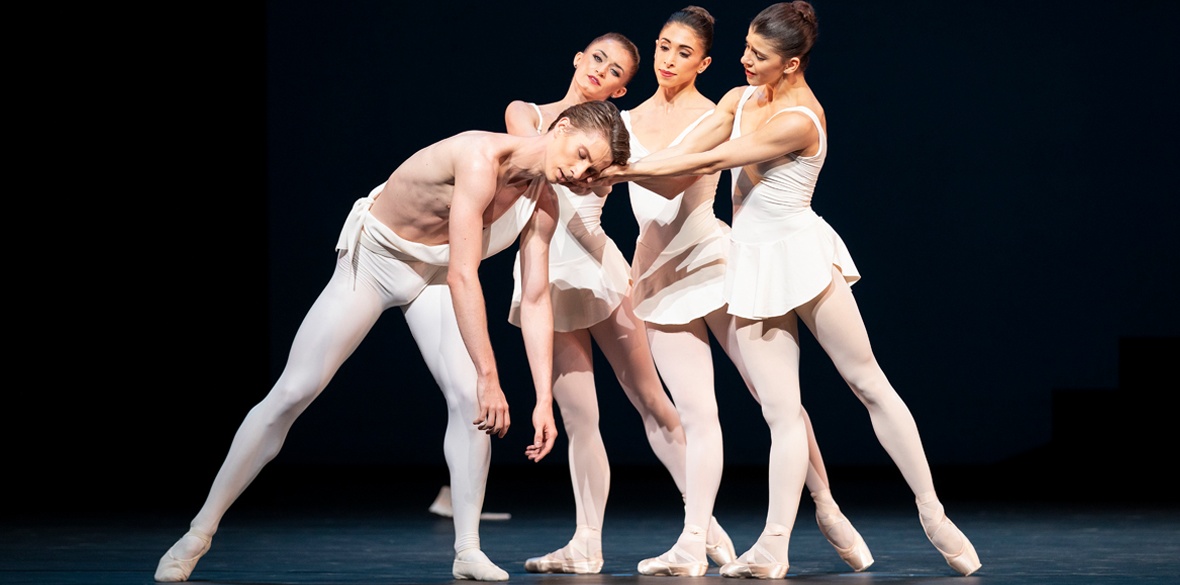This is the last article you can read this month
You can read more article this month
You can read more articles this month
Sorry your limit is up for this month
Reset on:
Please help support the Morning Star by subscribing here
Balanchine and Robbins
Royal Opera House, London
GEORGE BALANCHINE’S Apollo certainly bears out his central credo that dance is music brought to life. Commissioned by Serge Diaghilev in 1928, it initiated numerous collaborations between Balanchine and Igor Stravinsky.
The dancers’ graceful and unhurried movements, peppered with sudden bursts of angular energy, embody Stravinsky’s austere score. The plain turquoise backcloth and the dark, stepped structure centre stage as the only scenic elements allow the choreography’s purity and sophistication to dominate the ballet.
The distracting frills and flounces of classical ballet costumes are substituted by pared down, white tunics for both genders to best display the dancers’ purity of line, although the female dancers retain the traditional pink tights and the pain-inducing satin point shoes of the past, which lengthen the lines formed by legs thrown high and straight.
Some of the ballet’s most beautiful passages are the geometric ensembles formed by pas de deux and by a quartet of three female and a single male dancer. Movements are subtle and minimal, with a gentle tilt of the head or hands flipped up and down from extended arms, as from mechanical hinges.
Slow-moving sculptural formations suggest classical Greek statues yet these occasionally confound by suddenly changing into complex technical feats, as when a female dancer balances on her male partner’s back in inventive, controlled abandon.
Apollo was part of the post-WWI “rappel a l’ordre” (“call to order”), which reassessed classical values in the arts by stripping them of their fusty debasement in the late 19th century.
In 1928 Balanchine, performers and audience would have been steeped in over-detailed 19th-century dance and culture followed by its vehement rejection by the early avant-garde’s radical experiments.
Just as Picasso moved from cubism to neoclassical figures, so Balanchine married modernist simplification with the strict discipline of classical ballet to create dance for the 20th century.
Jerome Robbins’s Dances at a Gathering of 1969 ended the tripe bill, with 10 dancers adorned in sweetie colours trying hard to convey a spirit of gaiety to a Frederic Chopin piano piece. But the whole dissolves into a fussy, aimless and disappointing end to the evening.
To follow Balanchine’s contemplative, sophisticated choreography with Robbins’s dynamic “hoe-down” is an error of judgement.
But, sandwiched between the two full-cast ballets, is a breathtaking rendering of Balanchine’s Pas de Deux, danced to music by Tchaikovsky by the sublime Natalia Osipova, partnered by Reece Clarke.
It was a privilege to enjoy this all too short but technically superb and emotionally generous performance by one of the world’s great ballerinas. Her scintillating performance, fizzing like good champagne, was mesmerising and truly unforgettable.
Runs until June 13, box office: roh.org.uk











